
The Australian Bureau of Statistics (ABS) today released the national accounts for the December quarter, which registered a 0.6% increase in real GDP over the quarter and a 3.1% rise over the year. The result was in-line with market expectations.
On a per capita basis, however, real GDP increased by only 0.2%. Moreover, real national disposable income per capital fell for the second consecutive quarter due to the ongoing slump in commodity prices and the terms-of-trade.
The below ABS table shows the breakdown by the main components compared to the previous quarter:
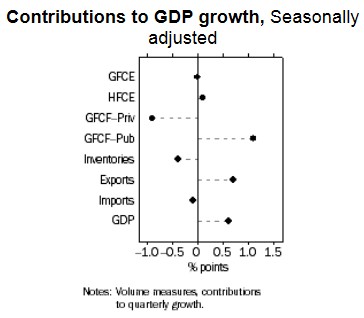
According to the ABS, growth for the quarter was driven by a 1.1% contribution from public investment, and a 0.6% contribution from net exports. These increases were partially offset by a -1.0% contribution from private investment and a -0.4% contribution from changes in inventories.
The industries that drove growth in the December quarter were Mining, Manufacturing, Health and Finance, with each industry contributing 0.1 per cent to the increase in GDP.
The Northern Territory experienced the strongest growth over the quarter, with final demand growing by 9.7%. This was followed by 0.5% growth in Western Australia and 0.4% growth in New South Wales. By contrast, final demand was flat in Queensland and fell in Victoria (-1.1%), Tasmania (-1.1%), the ACT (-0.6%), and South Australia (-0.5%). Victoria, South Australia, Tasmania and the ACT appear to be in recession, with each experiencing at least two consecutive quarters of negative growth in final demand (albeit different to GDP).
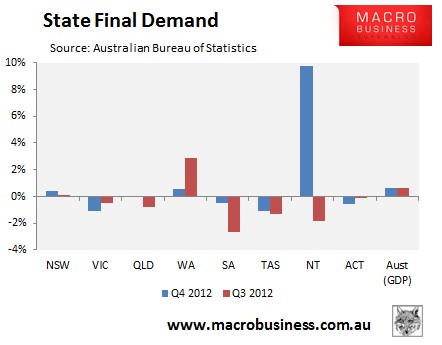
The terms-of-trade declined for the fifth consecutive quarter, down by another -2.6% on lower commodity prices:
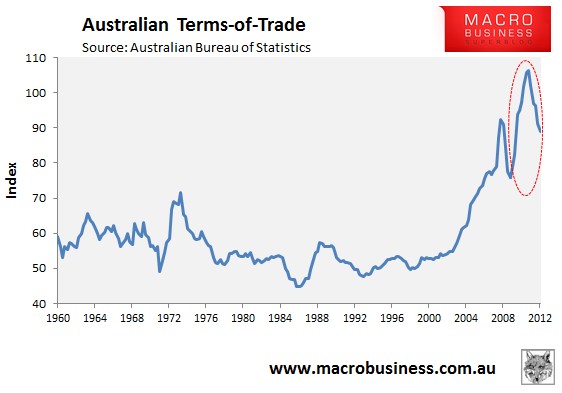
The decline in the terms-of-trade is dragging heavily on income growth, with real per capital national disposable income (NDI) falling by -0.5% over the quarter and by -1.4% over the year. Going forward, income growth will continue to be weak as long as the terms-of-trade continues to unwind (see below charts).
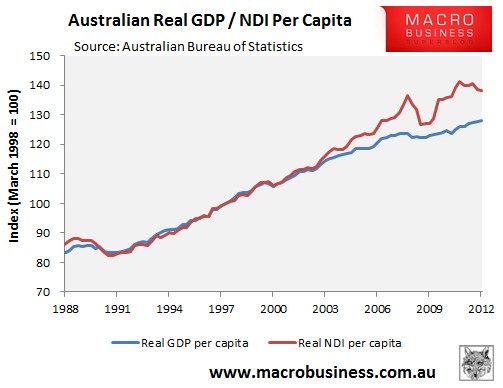
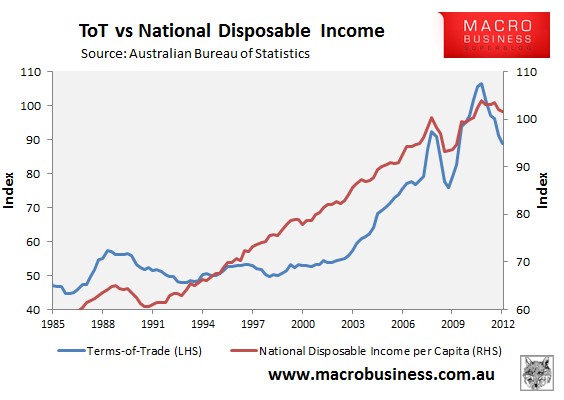
Arguably, the best story to come out of this release is that productivity continued to grow, with real GDP per hour worked increasing 0.7% over the quarter and by 3.5% over the year. The structural adjustment under way looks like it is creating greater efficiencies in the weaker sectors:
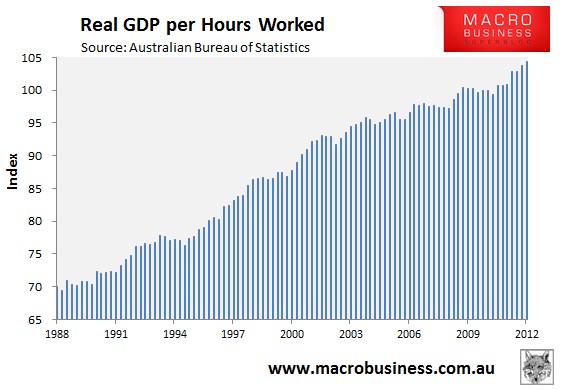
Finally, the household savings ratio fell slightly over the quarter to 10.1% from 10.3%, and remains well above the levels of the 2000s housing/credit boom, but below the recent peak level of 12.1% reached in June 2009 in the wake of the financial crisis:
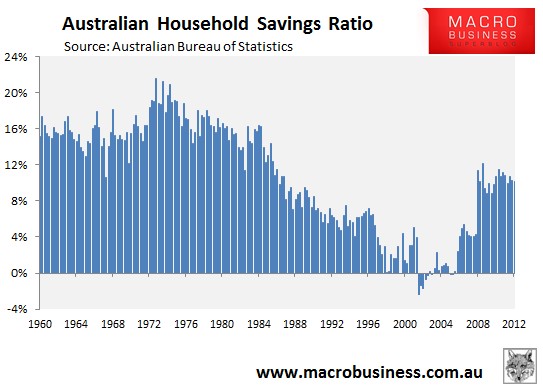
Overall, this is a mixed result. Growth of real GDP per capita was positive but fairly weak, the non-mining states continue to struggle, and disposable incomes are on the slide on the falling terms-of-trade. On the positive side, productivity continues to improve.

